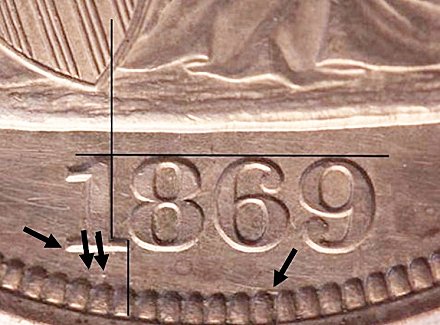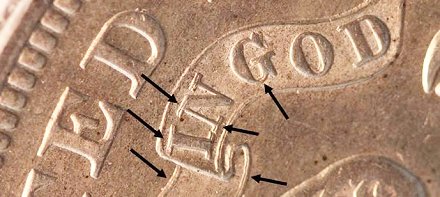|
|
Comments: This is the second use of Obverse P3. It was previously used to strike the OC-P4 die marriage. It is the second of three uses of Reverse A. |
Obverse P3 Note that this obverse is identified as a proof die since it was first used to strike the OC-P4 die marriage. The following photo shows the Obverse P3 attribution grid.  1869 Obverse P3 attribution grid Obverse P3 can also be identified by the misplaced 6 in the denticles under the right side of the prominent 6. This variety is identified as MPD-001. This obverse also features repunching on the 1, visible under the base, and two small lumps in the field between the base of the 1 and the denticles. All these features are visible in the photo. All of the identifiers become very weak in die state b, almost completely removed by die polishing.
|
Reverse A displays very notable die doubling, most visible on the motto. This is similar to the doubling on several other reverses, most notably the proof-only reverse, PA. Unfortunately there are no other easily visible die markers. The unfinished area between the lower and middle leaves is much larger on Reverse A.  1869 Reverse A die doubling
This die marriage has often been seen mis-attributed as a proof by the grading services. |
| Photo credits:
Obverse 2: 1869 PCGS PR61 (mis-attributed as a proof by PCGS), from the Osburn-Cushing reference collection. Reverse A: 1869 PCGS PR61 (mis-attributed as a proof by PCGS), from the Osburn-Cushing reference collection. |
